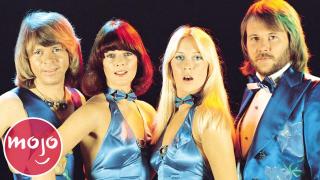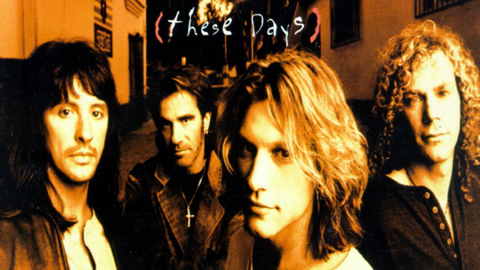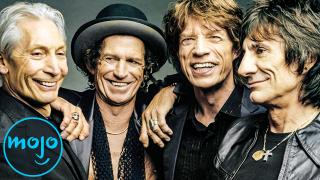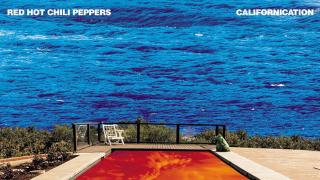Top 20 Songs with Harmonies That Give Us Chills
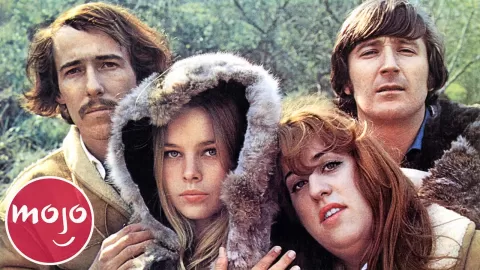
#20: “Release Me” (1990)
Wilson Phillips
Top 10 Legendary Albums That Were Panned At Release
“Hold On” may be the better-known single from Wilson Phillips’ debut album from 1990, but don’t sleep on this song. “Release Me” features wonderful triple harmonies from all the members of Wilson Phillips, which is no mean feat. The song also boasts that polished production style which was so indicative of the late ‘80s and early ‘90s. This slickness allows those aforementioned harmonies to shine brightly above the restrained musical arrangements. The end results highlight the talents of Chynna Phillips, Carnie Wilson and her sister Wendy, making “Release Me” a tour de force of vocal-oriented pop/rock.
#19: “Eternal Flame” (1989)
The Bangles
The songwriting process can be approached in myriad ways. Susanna Hoffs collaborated with compositional pros Tom Kelly and Billy Steinberg for this hit with her group, The Bangles. This group effort mentality also applies to the song’s arrangements, which allow for evocative, almost gothic backing harmonies to Hoff’s lead vocal. “Eternal Flame” is relatively sparse with regard to instrumentation, and this space allows The Bangles to truly work as a team. Hoffs carries the main melody, but the backing harmonies that begin with “close your eyes” lift up “Eternal Flame” to a place of pop ballad perfection.
#18: “I’ll Never Find Another You” (1964)
The Seekers
Top 10 Modern Songs with Harmonies That Give us Chills
The 1960s was a wondrous time for fans of folk music. There was a significant crossover with regard to the pop realm, allowing for artists like Australia’s The Seekers to see chart success. “I’ll Never Find Another You” is one of the group’s best songs, thanks largely to the crazy amount of vocal talent on display. Folk music’s intrinsically intimate and minimalist approach allows the quadruple vocal attack of Judith Durham, Althol Guy, Keith Potger and Bruce Woodley to shine. There’s a marked melancholy tinge to the song, as well as a time capsule sentiment that makes “I’ll Never Find Another You” feel forever locked in a dance with the decade in which it was recorded.
#17: “More Than Words” (1991)
Extreme
Top 10 Songs with Harmonies That Give Us Chills
The world of glam metal may not exactly be the place where one might seek out a tender, acoustic ballad. Yet, here we are with Extreme’s “More Than Words,” a massive crossover hit for this Boston-based group of hard rockers. The band’s rhythm section has nothing to do here, and even poke gentle fun at this during the song’s music video. Yup, “More Than Words” is all about the performance of guitarist Nuno Bettencourt and singer Gary Cherone, as the pair harmonize with a laser focus. Bettencourt’s restrained plucking carries a relaxed groove, as he locks in with Cherone’s powerful lead vocal. It ends up sounding like gangbusters.
#16: “Helplessly Hoping” (1969)
Crosby, Stills & Nash
There are a number of vocal groups out there, particularly from the 1960s, that have become synonymous with this ability to really nail a vocal harmony. Crosby, Stills & Nash certainly fit within this category, as evidenced by this single from 1969. “Helplessly Hoping” is a song where the triple vocal harmonies are crafted to work together with the song’s alliterative lyrics. It’s a relatively simple relationship song on the surface, but more research and a deeper listen will reveal just how high the level of complexity is here with CSN.
#15: “Don’t Let Go (Love)” (1996)
En Vogue
Top 10 Bon Jovi Songs
It speaks volumes to the collective talents of En Vogue that they’ve managed to stand so tall within the crowded field of vocal R&B. There have been a LOT of genre-defining girl groups out there, yet “Don’t Let Go (Love)” is still such a dizzyingly awesome listen, years on since its 1996 release. The warm production gives the guitar and drum accompaniment a funky rock feeling that serves up great contrast to En Vogue’s vocal power. Subtlety is largely eschewed here on “Don’t Let Go” in favor of raw emotion and unbridled skill. The harmonies weave in and out, punctuating words and phrases within the verses (and that amazing chorus) to give “Don’t Let Go” this vibe of feeling cool forever.
#14: “The Chain” (1977)
Fleetwood Mac
Top 10 Songs with the Most Underrated Harmonies
The sound of romantic fracture and emotional turmoil reverberates throughout this 1977 banger from Fleetwood Mac. The group’s “Rumours” LP was the soundtrack to multiple relationships within the band falling apart, and that pain is laid bare on “The Chain.” The vocals of Stevie Nicks, Lindsey Buckingham and Christine McVie weave together like strings on some arcane musical loom, crafting stardust magic with every harmony. The determined, quarter-note rhythm of the verses builds to a final, bass-driven crescendo. It’s here where “The Chain” enters Hall of Fame territory, as Fleetwood Mac serve up ghostly harmonies for love’s bittersweet farewell.
#13: “Bohemian Rhapsody” (1975)
Queen
If there’s one obvious entry on this list, perhaps it’s this one. “Bohemian Rhapsody” by Queen just feels like one of those slam dunk examples of the vocal harmony as high art. It’s there right from the jump, as Freddie Mercury and The Boys declare their statement of musical intent. All of the members from Queen could sing, so here on “Bohemian Rhapsody,” they do just that: and make musical history in the process. Each movement of the song ushers in a new opportunity for the members of Queen to show off their chops. From that aforementioned intro to the moody verses to that fiery, hard rock finale: it’s all here, in gloriously overblown bombast.
#12: “Rainy Days and Mondays” (1971)
Carpenters
Soft rock isn’t an insult - at least, not when it comes to Carpenters. This sibling duo helped define 1970s pop radio, but don’t think for a second that this diminishes the talents of Karen and Richard Carpenter. “Rainy Days and Mondays” was written by the legendary Paul Williams and Roger Nichols, and features Wrecking Crew recording alum Hal Blaine on the drums. Karen herself was an accomplished percussionist, but it’s her vocals that embrace the listener like the warmest, most comforting sweater. Richard’s harmonies and electric piano playing never overshadow his sister’s magnificent lead vocal, yet their combined talents turn “Rainy Days and Mondays” into a mood, full stop.
#11: “To Love Somebody” (1967)
Bee Gees
Top 10 Songs You Know from the First Word
The Bee Gees may be more closely associated with 1970s disco, but their early work feels far more indebted to the psychedelic pop and rock from the 1960s. “To Love Somebody” arrives straight from this underrated period in the group’s history, yet fans can hear that trademarked Bee Gees vocal talent, even at this early stage. The baroque-pop musical arrangements are evocative-as-hell, feeling much more like The Beatles than “Saturday Night Fever.” This is no slight to either period, but it’s refreshing to hear the Gibb siblings harmonize in this more rock-focused fashion. Their work on that chorus, in particular, flutters and soars like a robin. It’s magical stuff.
#10: “You’ve Lost That Lovin’ Feelin’” (1964)
The Righteous Brothers
Lost Boy I Am Here
What constitutes a perfect vocal harmony? They’re everywhere in music, but the best ones reach out, grab our hearts, and make us feel something. Call it the chills, nostalgia, or simply “that lovin’ feelin’,” but we know it when we hear it. The Righteous Brothers work perfectly off each other here on 1964’s “You’ve Lost That Lovin’ Feelin’,” while Phil Spector’s “Wall of Sound” production amplifies everything to evoke a certain time and place. Bill Medley’s lead, baritone vocal sets everything up before Bobby Hatfield hits the high harmony for the chorus. Hatfield also delivers some banger high notes near the song’s tail end, but it’s all about that chorus, man.
#9: “Be My Baby” (1963)
The Ronettes
Top 10 Songs That Will Make You Feel Old
We’re sticking with the Phil Spector “Wall of Sound” style here once again for our next entry, an absolute classic slice of early ‘60s pop. Ronnie Spector (then under the name Veronica Bennett) is actually the only member of The Ronettes to sing on the track, overdubbing all of the backing harmonies that lift up her soaring vibrato. It’s these sweetly-sung backing “oohs and aahs” that make Bennett’s already powerful work on the chorus feel truly iconic. The end results evoke those nostalgic, slightly sad melodies that make “Be My Baby” tug at so many heartstrings.
#8: “Turn! Turn! Turn!” (1965)
The Byrds
Rijell Turn The Page
The Byrds may not have written “Turn! Turn! Turn!”- that honor belongs to folk singer Pete Seeger - but it’s their version that’s arguably gone down as the most well-known. It also doesn’t feel unfair to surmise that the band’s amazing harmony vocal work helped make their take on “Turn! Turn! Turn!” feel so indicative of the 1960s. Roger McGuinn takes the lead, while David Crosby and Gene Clark assist on harmony vocals, and it’s truly the stuff of magic. It’s still folky, sure, but there’s also a rock backbeat, and a proto-psychedelia that would define The Byrds’ musical direction into the future. The vocals are insistent and captivating, possessing this glorious echo that makes “Turn! Turn! Turn!” feel and sound like no other song from the era.
#7: “God Only Knows” (1966)
The Beach Boys
Top 10 Sufjan Stevens Songs That Will Give You Chills
One does not simply discuss rock vocal harmonies without praying at the altar of The Beach Boys. It doesn’t matter whether we’re listening to the old-school surf-rock fun of “I Get Around” or our number seven entry, “God Only Knows,” The Beach Boys are absolute masters of their craft. A bevy of instruments were laid down in the studio for this latter song, including everything from sleigh bells and clarinets to everyday kitchen cups. At the end of the day, however, it’s all about how Brian Wilson and Bruce Johnston harmonize Carl Wilson’s soaring lead vocal. This is a tender, yet deceptively complex song with devastating arrangements and the kind of vocal performances that make the goosebumps rise, and the hair stand on end.
#6: “Because” (1969)
The Beatles
Top 10 Best Sabrina Carpenter Songs
The Beatles were another band whose career trajectory saw them embracing some of the most forward-thinking vocal arrangements to go along with their influential songwriting talents. “Because” from 1969 couldn’t sound further removed from the band’s early pop hits, but instead feels more at home with late-period gems like “Eleanor Rigby” and “While My Guitar Gently Weeps.” The direct inspiration from Beethoven’s “Moonlight Sonata” lends “Because” a gothic and grandiose atmosphere, like something out of the “Castlevania” franchise. Elsewhere, the Moog synthesizer and electric harpsichord underline those haunting vocal harmonies that stress that aforementioned melody lift from Beethoven. It’s brilliant stuff.
#5: “Thank You For the Music” (1978)
ABBA
The Rolling Stones - The Story & the Songs
The opening of “Thank You for the Music” by ABBA sounds like a Broadway show tune, which is fitting since it’d later be used in “Mamma Mia!” There’s a grand, cabaret style to this track that’s not quite the disco for which ABBA was largely known, but more of a sweeping pop ballad with great vocal harmonies. The group had already proved they could deliver some amazing harmonies on songs like “Knowing Me, Knowing You,” and “Thank You for the Music” underlines this fact in a great way. The chorus sounds particularly massive as Agnetha Fältskog handles the lead, while Anni-Frid Lyngstad and the other backing vocals echo Fältskog in fantastic fashion.
#4: “The Sound of Silence” (1965)
Simon & Garfunkel
Top 20 Sound-Alike Songs
It seems difficult to believe that the debut album from Simon & Garfunkel, featuring the original version of “The Sound of Silence,” failed to make an impact back in 1964. Yet, if that hadn’t happened, then perhaps we’d never have this 1965 remix to enjoy, a take many feel is the definitive version of the song. The electrified instrumentation doesn’t hamper the folk duo’s amazing harmony vocals. If anything, they amplify how “The Sound of Silence” resounds as a defining song of the 1960s, an evocative tune where Simon and Garfunkel become, almost in an instant, icons of their generation. This reputation would be further cemented on tear-jerkers like 1970’s “Bridge Over Troubled Water.”
#3: “Seven Bridges Road” (1980)
Eagles
Top 10 Catchiest Pop Songs of the Last Decade
The Dude may hate the Eagles, but even he probably couldn’t deny the vocal harmonies present on their version of Steve Young’s “Seven Bridges Road.” Or maybe we better address the elephant in the room by calling it Iain Matthews’ arrangement of “Seven Bridges Road” that was allegedly heisted by Eagles for their 1980 hit? It doesn’t really matter on which side of the argument you lay because there’s no denying that this live track really captures how well the band harmonized out on stage. The quintuple harmony in particular is incredible to behold, creating a moment of musical history that’s difficult to beat. The control and attention to detail is just astounding.
#2: “California Dreamin’” (1965)
The Mamas & The Papas
Top 10 Songs About California
The musical climate of the 1960s was one that supported huge growth, from West Coast folk and psych rock to psychedelia and British Invasion imports. The Mamas & the Papas were from the former camp, and their hit “California Dreamin’” is perhaps THE song that could serve as a time capsule relic from this very important decade. The lead vocal by Denny Doherty, as well as the harmonies by John and Michelle Phillips with Cass Elliot were actually laid over instrumentation by the Barry McGuire version of the song. Yet, it’s the The Mamas & the Papas warm harmonies, together with a ghostly, improvised flute solo by Bud Shank, that makes “California Dreamin’” one for the ages.
#1: “All I Have to Do Is Dream” (1965)
The Everly Brothers
Top 10 A Cappella Performances that Give Us Chills
What is it about pop hits from the 1950s that make us cry: Every. Single. Time? There’s an innocence and nostalgia associated with songs like “All I Have to Do Is Dream” that makes the listener yearn for a time and place that may or may not exist. The harmonies of The Everly Brothers on here are bittersweet and slightly melancholic. Their voices evoke imagery so closely associated with this decade: sharing milkshakes, young sweethearts holding hands at the drive-in, and those same sweethearts dancing close to this song. The Everly Brothers captured lightning in a bottle with “All I Have to Do is Dream,” their harmonious voices achieving not only Billboard chart success, but musical immortality.
What vocal harmonies tug at your heartstrings? Let us know in the comments!




